Creating an award-winning vehicle in record time
Using Siemens Digital Industries Software’s digital platform to focus on quality, cost and time
Nissan Technical Centre Europe
Nissan Technical Centre Europe (NTCE) is part of Nissan’s integrated research and development (R&D) network, which has centers in Japan, the United States and Europe. The largest of Nissan’s six European R&D facilities, it is home to more than 500 engineers, and is the center of excellence for the design and development of vehicles manufactured in Nissan’s European plants.
http://www.nissan-global.com/- Headquarters:
- Cranfield, Bedfordshire, United Kingdom
- Products:
- NX, NX CAD, Simcenter 3D Software, Simcenter Nastran, Simcenter Products, Teamcenter
- Industry Sector:
- Automotive & transportation
Teamcenter allows us to have excellent version control, and this drives cost reduction and product improvement.
Nissan Technical Centre Europe
A PLM system that supports new levels of performance
“It brings excellence and polish to a class of cars that was already brimming with talent and tempting buys.” That was the verdict of the United Kingdom (UK) car-buyer’s guide What Car? when it announced the Nissan Qashqai as “Car of the Year 2014.” Described as both economical and classy, the secondgeneration Qashqai was commended for its comfort, refinement, space and safety: “Every last detail has been thought of, down to how you stow the parcel shelf.”
Credit for the award-winning small sport utility vehicle (SUV) goes to the Nissan Technical Centre Europe (NTCE) at Cranfield in the UK. “In developing the new Qashqai, we really had to focus on quality, cost and time,” says David Moss, vice president of Vehicle Design and Development at Nissan Technical Centre Europe. “Having the right PLM (product lifecycle management) system was vital. For Nissan, which produces five million vehicles a year with over a half-million in the UK, the right solutions are Teamcenter® software, NX™ software and Simcenter™ 3D software. These are the foundation digital platform for the company’s V-3P environment. Developing the new Qashqai within that environment has improved collaboration throughout the supply chain, cut timescales, increased quality control and enabled engineers to reach new levels of performance.”
A smooth upgrade fuels development of Qashqai in record time
Nissan is supported by Emixa Industry Solutions, a longstanding Siemens Digital Industries Software reseller that has been providing technical support to Nissan Technical Centre Europe for many years and has a deep understanding of Nissan’s V-3P environment. As NTCE prepared to work on the Qashqai, Emixa Industry Solutions provided assistance with an upgrade from Teamcenter Enterprise and I-deas™ software, version 5, to Teamcenter software on the unified architecture and NX software. This included the easy migration of legacy data using digital tools from Siemens Digital Industries Software. Ian Keen, senior engineer at NTCE, comments, “When we were developing the new Qashqai, there were five or six Emixa Industry Solutions engineers here because they are very knowledgeable about Teamcenter and how the Nissan system works. Now that the car is in production and we have developed our skills, there are two engineers who provide training, floor walking support and problem-solving. If something is not working quite right, we go to them for a solution or recommendation.” Moss adds, “Working with Emixa Industry Solutions certainly enabled us to develop the new Qashqai project in record time.”

Collaboration = significant productivity advantage
Nissan’s teams are geographically dispersed, with different functions across the UK and throughout the world. According to Keen, collaboration is a major PLM benefit. “Teamcenter enables us to share NX data effectively and efficiently as we work on different aspects of design and production. We particularly work with Spain, Japan and Vietnam, and we all know that we have the latest data, and this is a key factor for engineers developing parts simultaneously.”
Not only does the collaborative environment established with Teamcenter improve the exchange of information internally, it enables better communication with suppliers. Moss explains, “Real-time collaboration with partners is a huge advantage for us. It is vital that our suppliers use the same tools as Nissan. In fact, by using the same tools, we are able to exchange information much more readily and gain significant benefit from that real-time environment. Because everyone works on the same data, we get the answers we need much more quickly and can speed up development.”
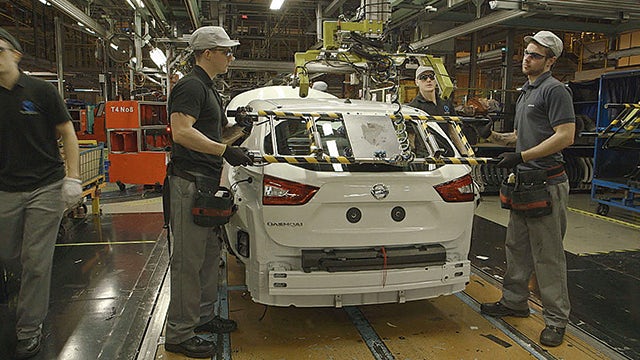
Fast workflows, half the development time
Once the vehicle bill of materials (BOM) structure has been released into G2B, the Nissan Group’s Global BOM, it is replicated in Teamcenter and copied across to NX. From that point, Dean Bailey, senior engineer at Nissan Technical Centre Europe, and his team members start to create part data. They are responsible for body-in-white computer-aided design (CAD) data creation and CAD data exchange with other Nissan entities around the globe; with partners such as Renault; and with suppliers, including those providing facilities, jigs and tools.
Nissan’s London design studio provides styling data. Engineers create all of the surfaces starting with the general sections, such as roof front, rear and side, and the different pillars. Bailey explains, “There are 80 or 90 surfaces for the whole body and they give us the basic shape of all of the panels, including all the reinforcements. I can honestly say that it’s been faster to create body metal data using NX. It allows us to do everything we need to do, from working with styling data all the way through to creating the engineering data, the production release data and the subsequent maintenance phase data.”
Keen and his team are responsible for planning digital lots, or builds, and looking after data management for PLM right through the product lifecycle. “We now front-load projects, using NX in the digital phase to validate the performance of the parts and vehicle,” says Keen. “We make our first physical vehicles from production tools with a very small proportion of prototype parts. A very expensive and very timeconsuming part of the cycle has been removed. We have confidence in the digital tools we are using, creating trusted CAD data that is our high-quality equity investment in the new Qashqai. From what used to be a six- or seven-year cycle with lots of hand-built prototypes, we are down to a three-year development cycle with no hand-built prototypes.”
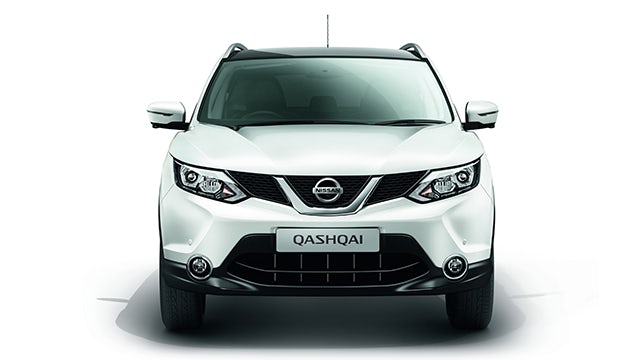
Excellent quality control
Teamcenter is the single repository for all design data and associated documentation. Keen notes, “Teamcenter manages, for example, what we call our shape release – effectively all the 3D CAD data, 2D information, product specifications and data notes.”
He points out that it is very easy to interrogate Teamcenter and bring in any NX data required. “If I want to examine the latest status of the new Qashqai engine assembly or if I want to see what it was like six months ago, I can go back and see what design changes have taken place.” It is critical that engineers are using the latest data. All changes made are instantly available at Nissan’s global CAD center in Japan and other technical centre locations around the world. “Teamcenter allows us to have excellent version control, and this drives cost reduction and product improvement.”
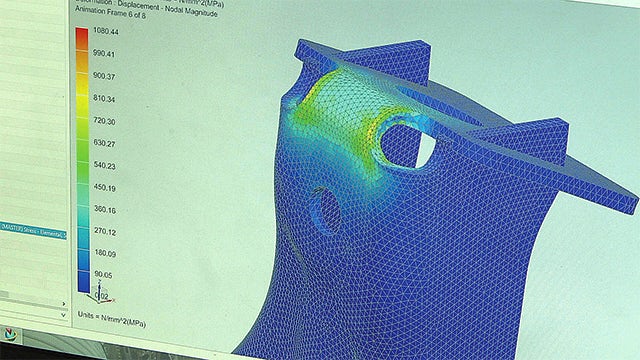
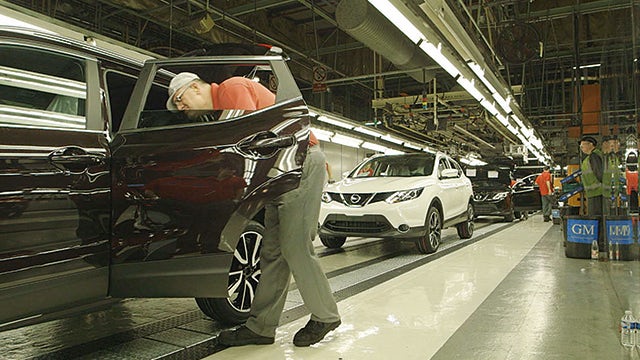
Simulation leads to new levels of achievement
Along with creating CAD models, Nissan Technical Centre Europe analyzes stress and thermal performance and performs motion simulation using Simcenter 3D, which is fully integrated with the NX environment. NTCE engineers particularly focus on strength and stiffness, using the Simcenter Nastran solver.
Keen explains, “Previously, design engineers would typically design their part based on prior knowledge or experience. For example, a bracket might be overengineered, and this has a cost and mass impact. Simcenter 3D allows us to interrogate our design, looking at deflection or stress concentration and the effect of certain changes; for example, the size of a hole or emboss and the thickness of material. We can then review a number of different design options and quickly choose the optimum one.” If CAE results show that a part does not have the correct strength or stiffness values, engineers can go back and easily make a change with Simcenter 3D before expensive production tooling begins.
Moss knows the value of Simcenter 3D to the business: “We set an emission target of 99 grams of CO2 for the new Qashqai, and we were successful in meeting it, even though that had never been achieved with a vehicle of this size before. We were able to use advanced simulation to optimize our design; for instance, our engineers were able to take out every unnecessary gram of weight in the vehicle.”
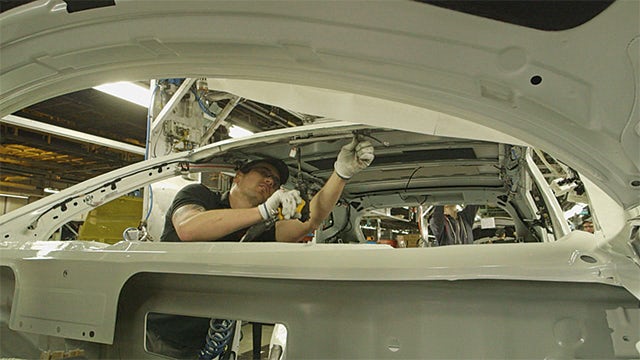
An advantage that is here to stay
“The development lifecycle at Nissan is being shortened all the time in order to get us to market more quickly with a product that meets our customer needs,” says Keen. “So we need the tools to work effectively with our suppliers and with the rest of the Nissan business, including everyone from research to testing and production engineering. Siemens Digital Industries Software’s technology allows us to do that.”
Moss concludes: “For development of the new Qashqai, we looked at all the tools available to do the job, and we saw that NX, Simcenter 3D and Teamcenter offered us a lot of advantages in terms of quality and timing. With Siemens Digital Industries Software’s digital platform, we have been able to take about 20 percent off of our data creation time, yet maintain quality, and this really gives us a business advantage.”
I can honestly say that it’s been faster to create body metal data using NX.
Nissan Technical Centre Europe
